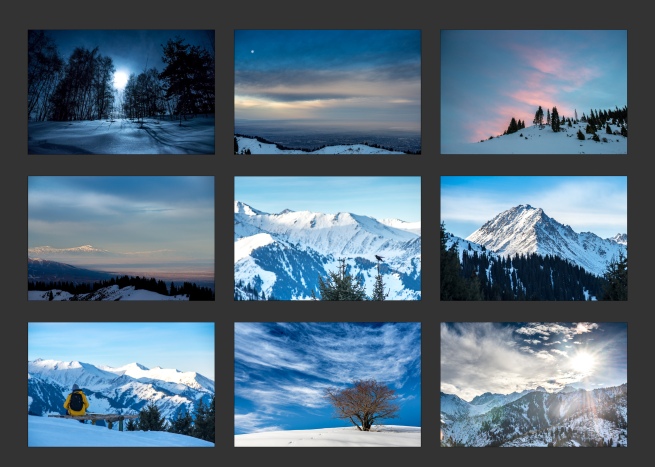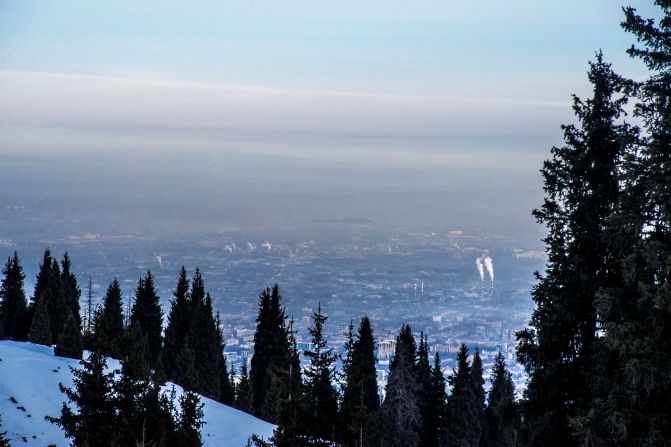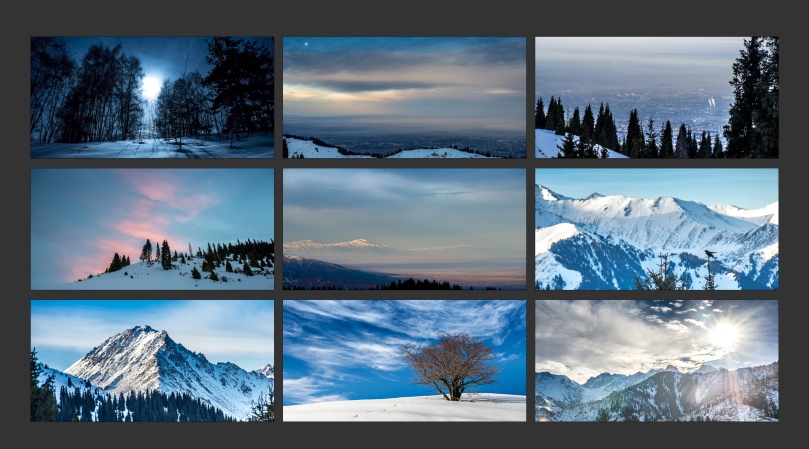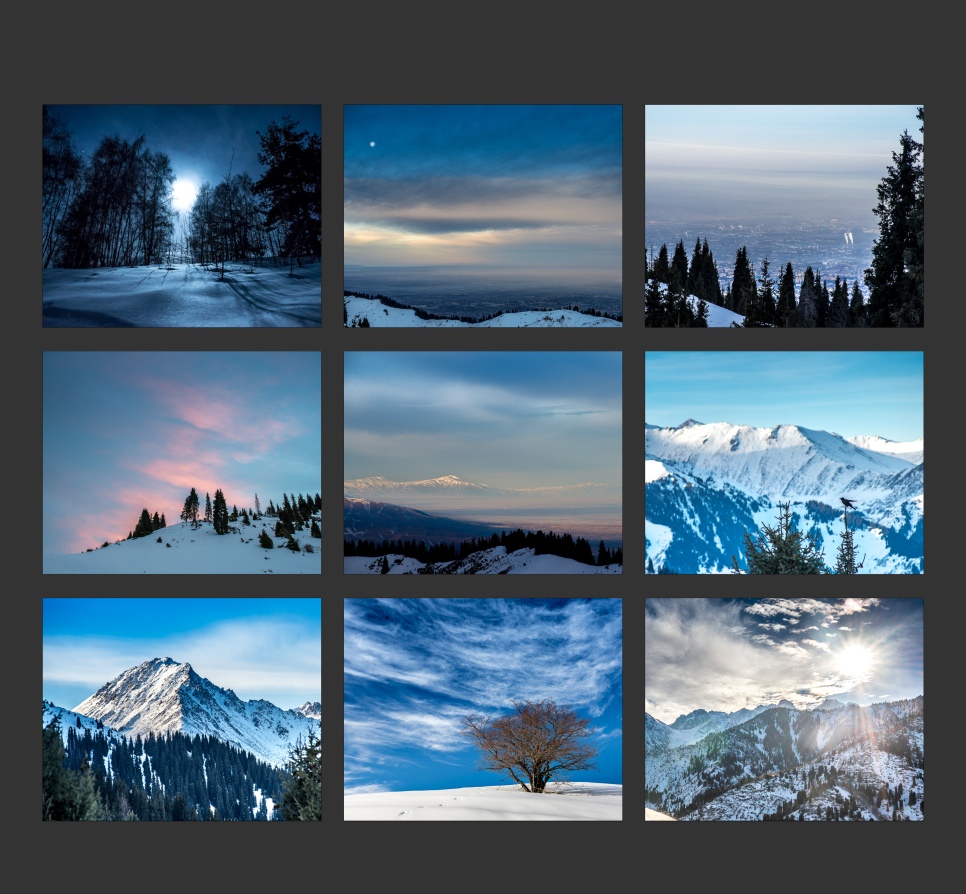Assignment 3 – Decisive Moment
Brief
The decisive moment is not a dramatic climax but a visual one: the result is not a story but a picture.
(Swarkowski, 2007, p.5)
You know it’s funny. You come to someplace new, and everything looks just the same.
(Eddie in Stranger Than Paradise, Dir. Jim Jarmusch, 1984)
- Prints
Submit a set of between six and eight high-quality photographic prints on the theme of the ‘decisive moment’. Street photography is the traditional subject of the decisive moment, but it doesn’t have to be. Landscape may also have a decisive moment of weather, season or time of day. A building may have a decisive moment when human activity and light combine to present a ‘peak’ visual moment.
You may choose to create imagery that supports the tradition of the ‘decisive moment’, or you may choose to question or invert the concept. Your aim isn’t to tell a story, but in order to work naturally as a series there should be a linking theme, whether it’s a location, an event or a particular period of time.
- Assignment notes
Submit assignment notes of between 500 and 1,000 words with your series. Introduce your subject and describe your ‘process’ – your way of working. Then briefly state how you think each image relates to the concept of the decisive moment. This will be a personal response as there are no right or wrong answers in a visual arts course. You’ll find it useful to explore the photographers and works referenced in Project 3, if you haven’t already done so. Don’t forget to use Harvard referencing.
Post your prints, no larger than A4, to your tutor together with your assignment notes.
- Planning and Conducting
Decisive moment is a big subject for me. I would even say of philosophical significance. In my perception history and time itself is an infinite sequence of intertwined decisive moments of different levels. Starting with the big ones – decisive battles in wars, like Borodino during Napoleon’s invasion of Russia or Friedrich Paulus’ fail in the battle of Stalingrad. These are pivotal moments of the history, which defined the shape of the world we live in. On the other end are routine, everyday decisions, which still can significantly affect the course of our lives.
So it is obvious that some moments of our lives are more important than the others, since they can affect all other moments by virtue of decision made or an occurrence taking place. In photography it is most logical and sensible that a photographer, willing to show the dynamic of life, would like to concentrate on these dramatic moments – the time crossroads, where the traffic and motion are the most intense.
In an old issue of a Russian magazine I have read the translation of Henri Cartier-Bresson’s introduction to his wonderful book “The Decisive Moment”. I think he provided there the definition of the very essence of photojournalism: “To me, photography is the simultaneous recognition, in a fraction of a second, of the significance of an event as well as of a precise organization of forms which give that event its proper expression.” (Henri Cartier-Bresson (1952). The Decisive Moment. New York: Simon and Schuster. pp. 1–14). The accuracy and exactness of this definition is breathtaking. And it also makes one think that photojournalism is really a craftsmanship that requires subtle sense of time and human psychology as well as excellent reaction and mastery of technic.
It also makes one think about the responsibility, as in photojournalism there are no “second chances”. As Henry Cartier-Bresson said, “There is a creative fraction of a second when you are taking a picture. Your eye must see a composition or an expression that life itself offers you…, Oop! The Moment! Once you miss it, it is gone forever.” (“The Acknowledged Master of the Moment”. The Washington Post. Retrieved May 4, 2010).
As human society is so volatile, the social photojournalist must maintain high level of insight, adaptiveness and mobility. I really fascinated the works of Henry Cartier-Bresson and plan to conduct an extensive research of his life and photographs for the Magnum Agency (http://www.magnumphotos.com/) within the framework of this course. This was also a recommendation from my tutor given in the feedback to my previous assignment.
I hope one day I could achieve a higher level in photojournalism and will be able to document in an appealing way the live, experiences, struggle and joy of my people. I am starting to feel an inclination towards social and humanitarian photography as my view of my country and the world broadens. However I have decided to leave this difficult but exciting field for the level 2 course and chose a different subject for this assignment.
I believe the concept of decisive moment can also be applied to a period of time in relation to a bigger period. In this sense certain times of a day are certainly more “decisive” than the others. The moment of transition from night to day I think is the most exciting and defining.
One of my favorite contemporary writers, a Russian belletrist Boris Akunin in his novel “The Diamond Chariot” put the following words in the mouth of the protagonist: “how much less evil and filth would there be in the world, if all the people would daily observe how the day is born”. I agree, that morning and sunrise is the time representing a number of great feelings: hope, triumph of life, purity and calmness. So I have picked the moment of transition from night to day as a subject for my assignment.
Almaty city where I live is literally surrounded by the highest peaks of the Tyan-Shan mountain range. The best way to meet the sunrise, in my opinion, is while sitting on the seashore or standing on the mountain peak. For obvious reasons I chose the latter.
There is a popular hiking 14 km route leading to the peak of Kumbel (3,300 m. alt.). I took a loyal friend of mine and on the weekend we climbed the peak. The initiative was not easy to take – getting up at 2.30 a.m., then driving the slippery mountain road and finally walking almost 4 hours to the one end. But I hope the efforts were worth it.
- Submission
Below are the pictures I have picked for the submission. They are taken between 6 a.m. and 9 a.m. during the ascent to the Kumbel peak. The sunrise time at that day was 8.00 a.m. sharp.
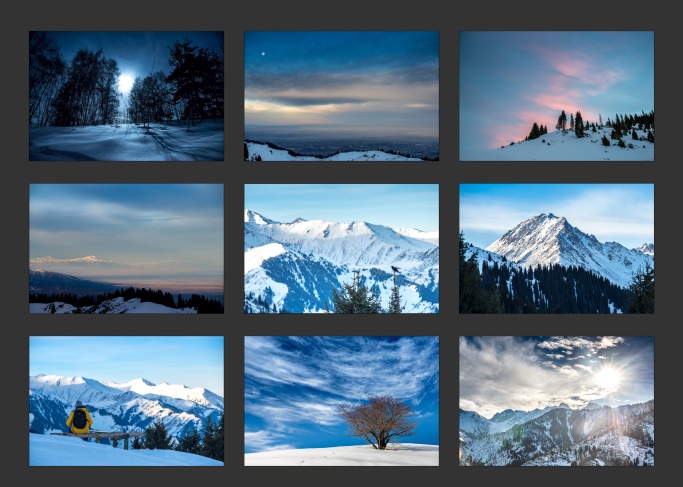

The first image was shot at 6.33 a.m. I have tried to capture “the last minute of night”, right before the sky starts to lighten. The presence of full moon made the shot a bit eerie, but I guess the moment was right. Of course this night shot had to be made from a fixed position with a long exposure of 0.4 seconds.
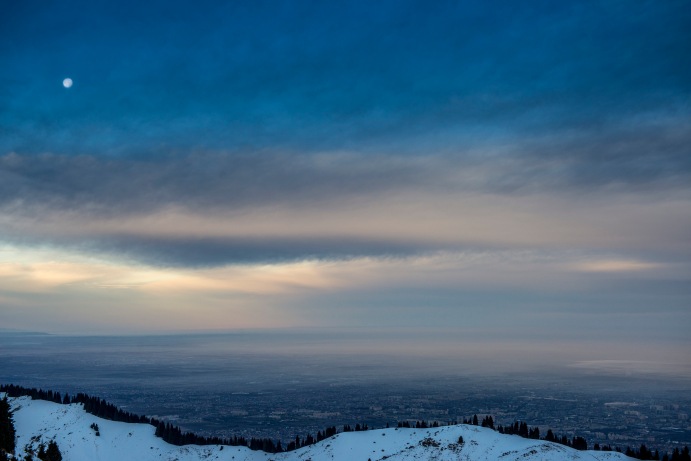
This shot shows how the day is winning gradually, as the sky is lightening and moon is fading
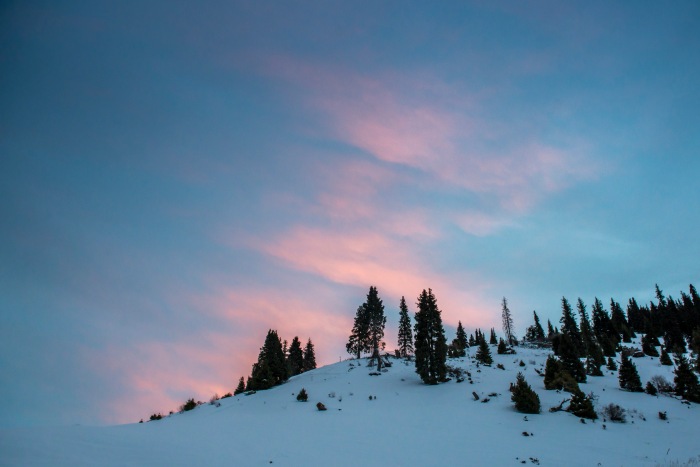
This shot was taken almost due to luck. While sun was still behind the horizon it started to illuminate the light clouds. While hardly climbing up I lifted my head accidentally, saw this beauty, raised the camera, took a number of shots, the next moment it was gone.
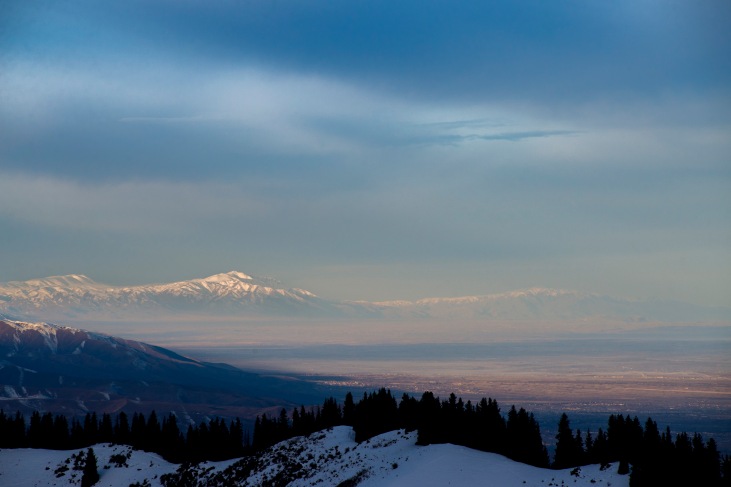
The pity is that the sun was rising from behind, so we did not see the actual moment of the sunrise (it can be seen on the south side of the Tyan Shan mountain range in Kyrgyzstan). However when the sun started to shine on the top of distant peaks it was really beautiful.
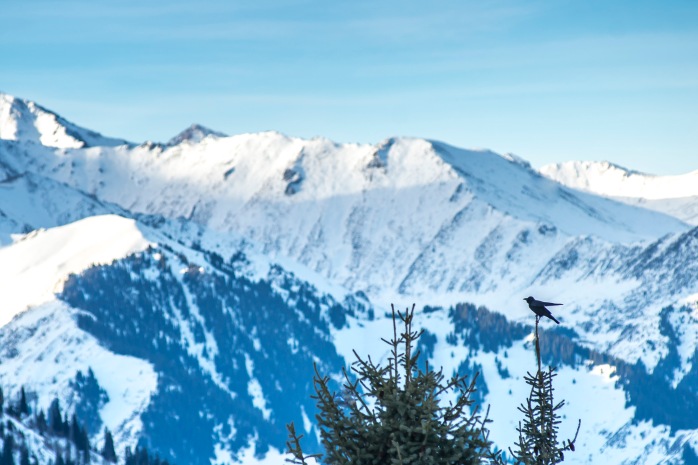
I liked how this little bird was sitting as if waiting for the sun to rise. I recalled the word from the song of the Beatles: “Blackbird singing in the dead of night… All your life You were only waiting for this moment to arise.”

The dramatic side lighting of this kind is available only in the early morning in the area.
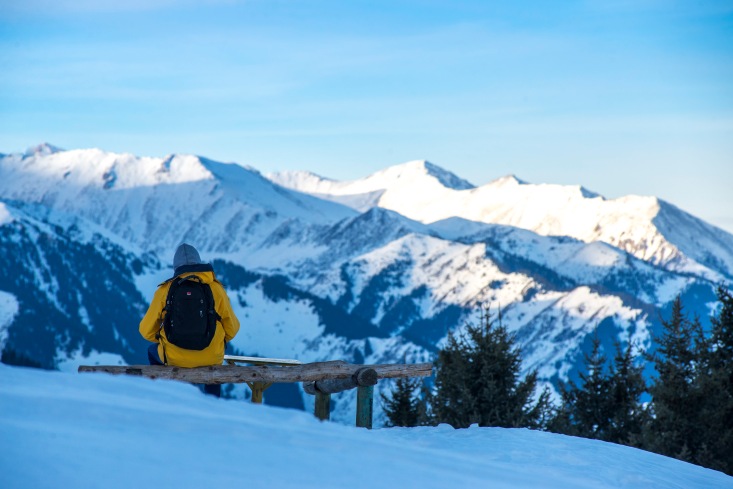
A nice moment of reflection in the peace and calmness of the morning in the mountains
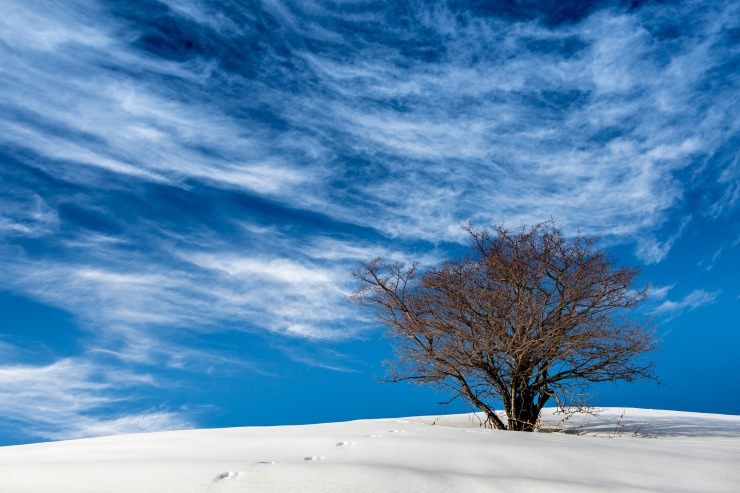
I have included this shot as it was greatly showing the calmness , peace and purity of the moment of morning in the mountains.
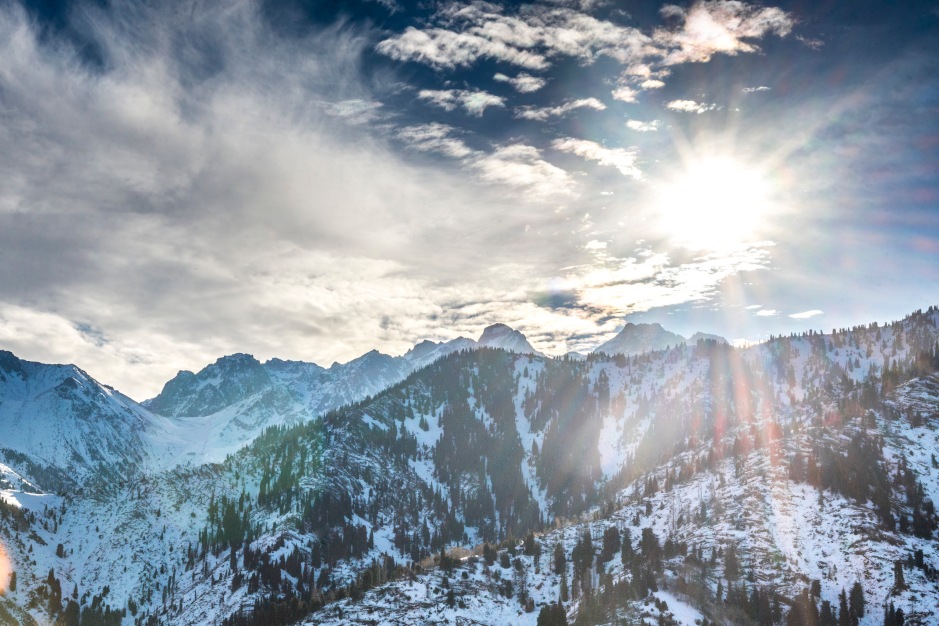
I took this shot as concluding to the series. Although technically imperfect, with the direct light fading the contrast, it contributed to the series by being an opposite to the initial shot. That one was still of the night, although dying, and this one is of the day already – full triumph of life.
Note on printing
I have prepared the A4 prints with my Epson L1800 jet printer. I am really very inexperienced in photo printing as I used this printer only for graphic design sample printing before. Also the original Epson Ink and paper is almost unavailable in our region so I went with analogues. For me the quality of the prints looks ok but I am really waiting for the feedback from my tutor for helpful suggestions on how the prints should be improved
